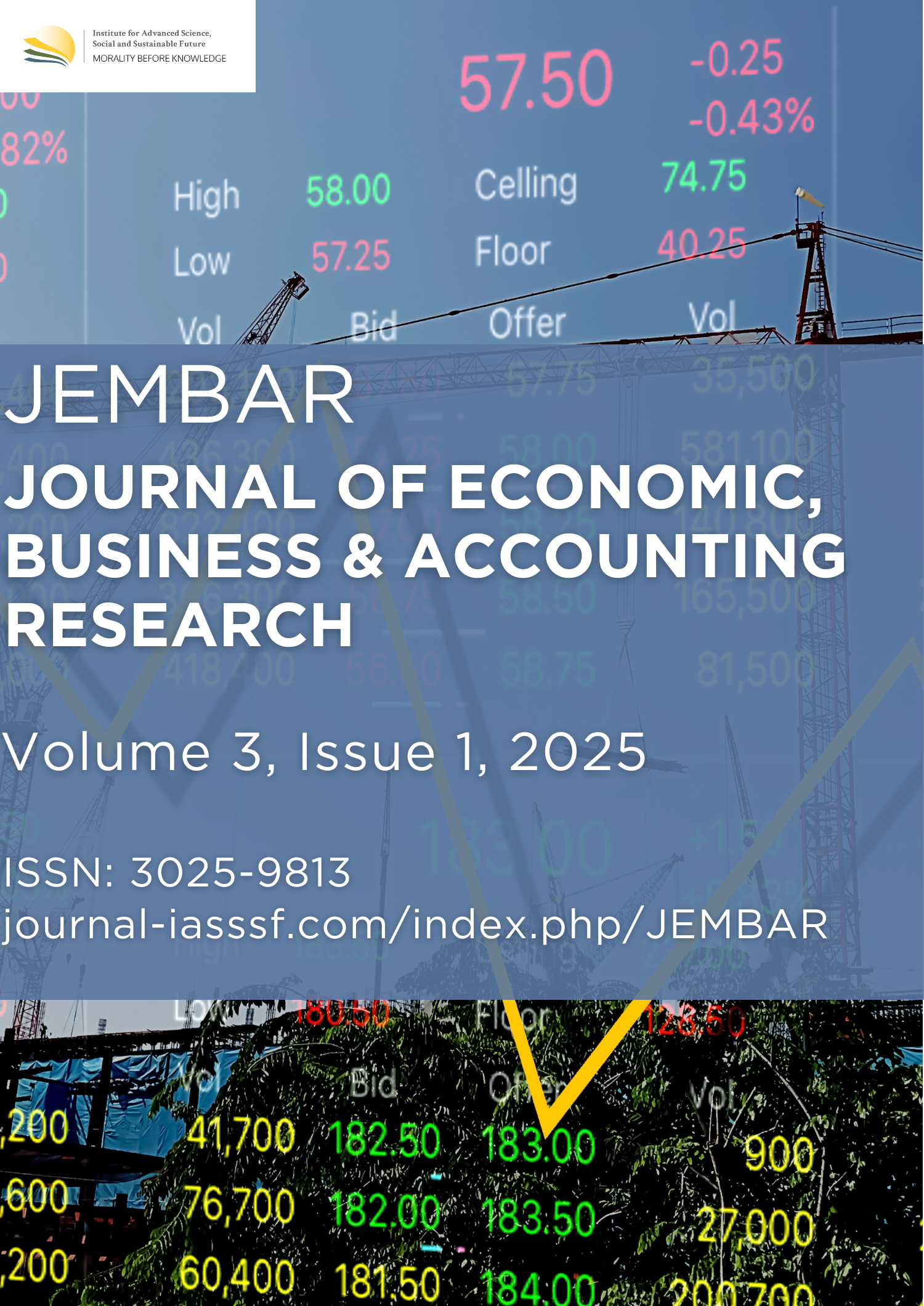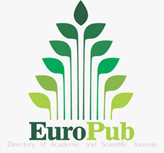Marketing management strategies for msmes: Examining the role of service quality, product quality, and price in shaping brand image
DOI:
https://doi.org/10.61511/jembar.v3i1.2025.1926Keywords:
brand image, price, product quality, service qualityAbstract
Background: The success of a company is closely related to effective marketing management. One of the key elements in marketing is brand image, which is shaped by service quality, product quality, and price. This study aims to determine the influence of service quality, product quality, and price on brand image, both partially and simultaneously. Methods: This research employs a quantitative approach using primary data collected through questionnaires. The sampling technique used is non-probability sampling with a purposive sampling approach. A total of 100 respondents were selected based on Cochran's formula, due to the unknown size of the population. The data were analyzed using multiple linear regression. Findings: The results of this research indicate that there is a positive and significant influence of service quality on the brand image, there is a positive and significant influence of product quality on the brand image, there is a positive and significant influence of price on the brand image, there is a positive and significant influence of service quality, product quality, and price on the brand image. Conclusion: In conclusion, service quality, product quality, and price have a positive and significant effect on brand image, both individually and simultaneously. These findings offer important implications for the development of marketing strategies, particularly for small and medium enterprises (SMEs). Novelty/Originality of this article: The novelty of this research lies in the simultaneous analysis of the three variables' influence on brand image within the context of a local home industry. The focus on SMEs using a quantitative approach makes this study both unique and relevant for designing effective marketing strategies for small business actors.
References
Agussalim, M., & Ali, H. (2017). Model Kepuasan Pelanggan: Analisis Produk Dan Kualitas Layanan terhadap Citra Merek pada Giant Citra Raya Jakarta. Jurnal Manajemen, 21(3), 317-335. https://doi.org/10.24912/jm.v21i3.254
Alam, S. S., & Islam, K. Z. (2021). Examining the role of environmental corporate social responsibility in building green corporate image and green competitive advantage. International Journal of Corporate Social Responsibility, 6(1), 8. https://doi.org/10.1186/s40991-021-00062-w
Alfian, I., & Marpaung, M. (2017). Analisis Pengaruh Label Halal, Brand dan Harga Terhadap Keputusan Pembelian di Kota Medan. AT-Tawassuth: Jurnal Ekonomi Islam, 2(1), 118-141. http://dx.doi.org/10.30821/ajei.v2i1.777
Anandia, R., & Santoso, S. B. (2015). Analisa Pengaruh Desain Produk, Persepsi Harga, Dan Kualitas Produk Terhadap Citra Merek Untuk Meningkatkan Minat Beli Konsumen Sepatu Adidas Original (Studi Kasus Pada Masyarakat Di Kota Semarang). Diponegoro Journal of Management, 798-808. https://ejournal3.undip.ac.id/index.php/djom/article/view/13264
Arikunto, S. (2018). Prosedur Penelitian: Suatu Pendekatan Praktik. Rineka Cipta.
Arjuna, H., & Ilmi, S. (2020). Effect of brand image, price, and quality of product on the smartphone purchase decision. EkBis: Jurnal Ekonomi dan Bisnis, 3(2), 294-305. https://doi.org/10.14421/EkBis.2019.3.2.1190
Daga, R. (2017). Citra, Kualitas Produk dan Kepuasan Pelanggan. Sulawesi Selatan. Global Research and consulting institute.
Dewi, A. M. (2022). Kondisi Industri Pengolahan Makanan dan Minuman di Indonesia. https://www.djkn.kemenkeu.go.id/kanwil-suluttenggomalut/baca-artikel/15588/Kondisi-Industri-Pengolahan-Makanan-dan-Minuman-di-Indonesia.Html
Ernestivita, G., & Kumar, V. (2025). Leveraging strategic revenue management and marketing for effective revenue diversification: evidences from Indonesia. Journal of Revenue and Pricing Management, 1-12. https://doi.org/10.1057/s41272-025-00550-9
Fathoni, A. (2017). Metode Penelitian & Teknik Penyusunan Skripsi. Rineka Cipta.
Flavian, C., Torres, E., & Guinaliu, M. (2004). Corporate image measurement: A further problem for the tangibilization of Internet banking services. International Journal of Bank Marketing, 22(5), 366-384. https://doi.org/10.1108/02652320410549665
Ghozali, I. (2016). Aplikasi Analisis Multivariate dengan Program IBM SPSS 19. Badan Penerbit Universitas Diponegoro.
Indrasari, M. (2019). Pemasaran dan Kepuasan Pelanggan. Unitomo Press.
Jasfar, F. (2015). Manajemen Jasa Pendekatan Terpadu. Ghalia Indonesia.
Kayakuş, M., Yiğit Açikgöz, F., Dinca, M. N., & Kabas, O. (2024). Sustainable brand reputation: evaluation of iPhone customer reviews with machine learning and sentiment analysis. Sustainability, 16(14), 6121. https://doi.org/10.3390/su16146121
Kayawati, L., & Kurnia, E. (2021). Membangun Citra Merek Sesuai Konsep Syariah. Economic and Business Management International Journal (EABMIJ), 3(3), 46. https://doi.org/10.556442/eabmij.v3i03.81
Kotler, P., & Amstrong, G. (2018). Prinsip-prinsip Pemasaran. (Ed. Ke-12). Jilid 1. Alih (Bob Sabran, Penerjemah). Erlangga.
Le, T. T. (2023). Corporate social responsibility and SMEs' performance: mediating role of corporate image, corporate reputation and customer loyalty. International Journal of Emerging Markets, 18(10), 4565-4590. https://doi.org/10.1108/IJOEM-07-2021-1164
Margono. (2014). Metodologi Penelitian Pendidikan. Rineka Cipta.
Martono, N. (2018). Metode Penelitian kuantitatif Analisis Data Sekunder. Raja Grafindo Persada.
Mogaji, E., & Nguyen, N. P. (2022). Managers' understanding of artificial intelligence in relation to marketing financial services: insights from a cross-country study. International Journal of Bank Marketing, 40(6), 1272-1298. https://doi.org/10.1108/IJBM-09-2021-0440
Oktaviani, L., & Sutopo, S. (2014). Analisis pengaruh brand image (citra merek), kualitas produk, dan harga terhadap minat beli produk mie instan supermi (Studi Kasus Pada Konsumen Mie Instan Supermie di Kota Semarang). Diponegoro Journal of Management, 3(4). https://ejournal3.undip.ac.id/index.php/djom/article/view/12931
Olson, E. M., Olson, K. M., Czaplewski, A. J., & Key, T. M. (2021). Business strategy and the management of digital marketing. Business horizons, 64(2), 285-293. https://doi.org/10.1016/j.bushor.2020.12.004
Priyatno, D. (2018). Mandiri Belajar Analisis Data dengan SPSS. Yogyakarta. Mediakom.
Rahmawati, P. (2015). Pengaruh Variasi Produk, Harga dan Customer Experience Terhadap Keputusan Pembelian Ulang Roti Breadtalk Yogyakarta. Jurnal Ilmu Manajemen UNY, 12(1), 89-98. https://doi.org/10.21831/jim.v12i1.11744
Rosadi, C. P., & Nursyamsiah, T. (2024). Development strategy for small and medium-scale halal food and beveragesector in Indonesia. Halal Studies and Society, 1(2), 1-7. https://doi.org/10.29244/hass.1.2.1-7
Septyan, D. A. (2022). Tips Menjalani Bisnis di tengah Pandemi Ala Tugu Bakery. Retrieved from. https://www.ukmindonesia.id/baca-deskripsiposts/tips-menjalani-bisnis-di-tengah-pandemi-ala-tugu-bakery
Srivastava, P., Ramakanth, D., Akhila, K., & Gaikwad, K. K. (2022). Package design as a branding tool in the cosmetic industry: consumers’ perception vs. reality. SN business & economics, 2(6), 58. https://doi.org/10.1007/s43546-022-00222-5
Sugiyono. (2019). Metode Penelitian Kuantitatif, Kualitatif, dan R&D. Edisi ke12 Jilid 1. Alfabeta.
Sunyoto, D. (2016). Manajemen Sumber Daya Manusia. PT Buku.
Surapto, D. (2020). The impact of brand trust, brand loyalty, brand image on service quality. In 2nd International Seminar on Business, Economics, Social Science and Technology (ISBEST 2019) (pp. 162-167). Atlantis Press. https://doi.org/10.2991/aebmr.k.200522.033
Tjiptono, F. (2017). Manajemen Jasa. Andi.
Yu, W., Cui, F., Han, X., & Lv, M. (2023). Does a corporation’s food recall strategy affect its brand image and consumers’ intention to purchase? A study in the context of cereal recall in China. British Food Journal, 125(4), 1437-1452. https://doi.org/10.1108/BFJ-01-2022-0023
Downloads
Published
How to Cite
Issue
Section
Citation Check
License
Copyright (c) 2025 Anisa Agustin

This work is licensed under a Creative Commons Attribution 4.0 International License.
















